You will need some marshmallows, skewers, plastic spoons, elastic bands and masking tape.
For part two of this activity you will also need a protractor, hot glue gun, tape measure and A3 paper.
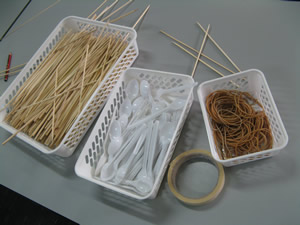

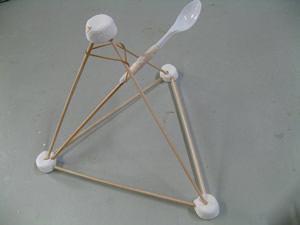
Constructing the catapult in a more durable manner will enable students to use it over and over again without needing to modify due to structural failure.
Step 1 . On an A3 paper mark out 60 degrees using a protractor and glue the three skewers to form the base of the pyramid.
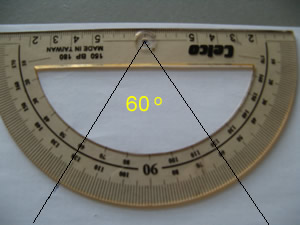
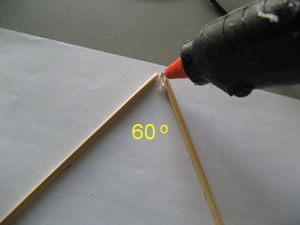

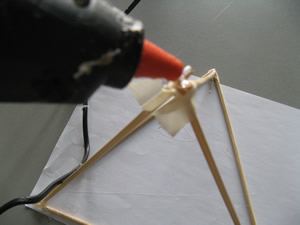
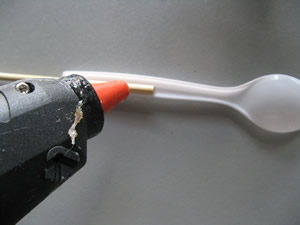
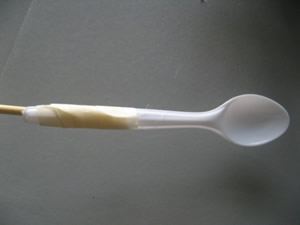

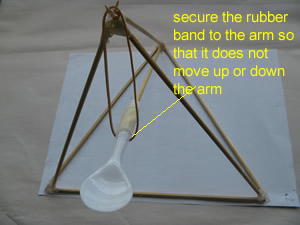
Now that the catapult is complete, its time to put it to good use.
You will need to measure the distance the marshmallow travels so a tape measure is needed.
Each group will need to graph the relationship between the length the elastic band is stretched and the distance travelled by the marshmallow. Repeat several times for greater accuracy.

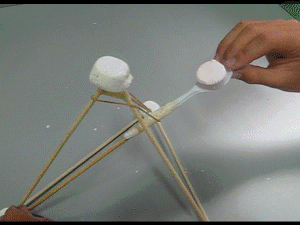
| Distance marshmallow travelled (cm) | Length elastic band was stretched. (cm) |
Using the graph paper provided by your teacher construct an appropriate set of axis and draw a line-of-best-fit for the data in the table above.
Your graph must have:
- a heading
- clearly labelled axis with the units
- dependent variable
on the y-axis
- independent variable on the x-axis
- all points accurately plotted
- the line of best fit properly drawn
Consider the picture on the right. It shows the catapult ready to fire.
a) What type of energy does the catapult possess?
b) When the student releases the arm is converted into
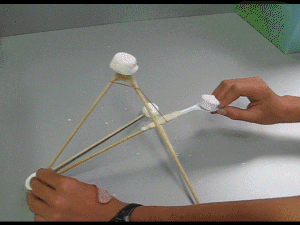
Consider the picture on the right. It shows the path of the marshmallow.
a) What type of energy does the marshmallow have at:
A
B
c)
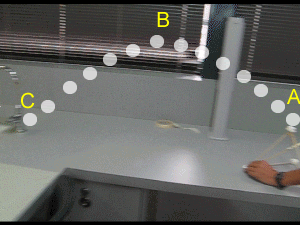
The image on the right shows a time lapse of a marshmallow catapulted into a container. The camera takes a picture every second.
Looking at the image what can you say about the marshmallow's:
horizontal speed>
vertical speed.
